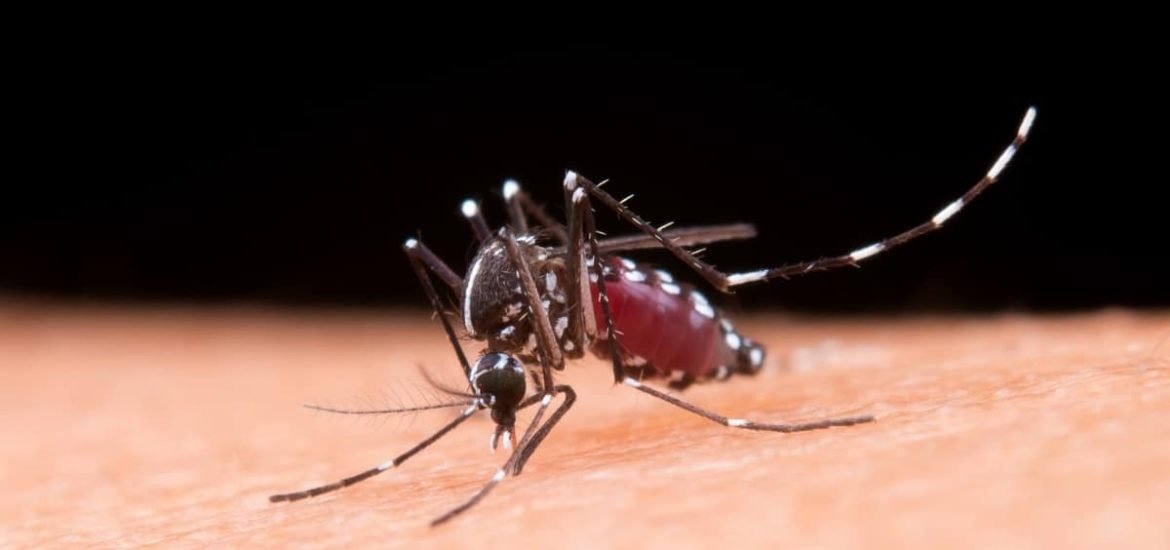
Last week, scientists reported the near eradication of disease-carrying mosquitoes from two separate islands in Ganzhou, China. The findings were published on 17 July in the journal Nature (1). Asian tiger mosquitoes (Aedes albopictus) are among the world’s most invasive mosquito species, carrying diseases like Dengue fever and the Zika virus, among other dangerous diseases.
Using a combination of two techniques, bacteria-induced incompatibility and irradiation-induced sterilisation, the scientists succeeded in dramatically reducing the number of these disease-carrying mosquitoes — amazingly, by more than 90 per cent. And while the sterile insect technique has been used in agriculture to successfully reduce pest numbers, this study is the first to combine bacteria-induced incompatibility with irradiation-induced sterilisation in the field.
The two-pronged approach led to one of the most successful eradication trials of A. albopictus to date, writes Prof Peter Armbruster, a mosquito ecologist at Georgetown University in the US, in an accompanying commentary. Now the question is, can it be scaled up?
How does it work?
The male A. albopictus mosquitoes are first infected with an artificial version of the bacterium Wolbachia, which hinders their ability to reproduce. The mosquitoes are then zapped with a dose of radiation, as a precaution to ensure any females that may have accidentally made their way into the lab also cannot reproduce once released.
When the non-biting males are released into the wild, the females they mate are unable to produce viable embryos. In other words, female mosquitoes that mate with Wolbachia-infected males cannot produce offspring, thus, effectively reducing the overall population of disease-carrying mosquitoes.
Over two years, the scientists released around 200 million male mosquitoes three times a week into two test areas in Guangzhou, China during the breeding season. Incredibly, they found that the number of hatched mosquito eggs decreased by more than 90 per cent. In addition, the numbers of females responsible for disease dropped dramatically by 83 to 94 per cent per year.
The results are comparable to other methods such as the use of insecticides and genetically modified mosquitoes.
Can we completely eradicate disease-carrying mosquitoes?
One big question arising from the recent findings is: can the approach be scaled up? Moreover, what are the potential implications of applying this technology on a much larger scale?
A previous study published in March of this year mapped the worldwide distribution of mosquito species in an effort to predict future distributions of the dangerous pests. And their findings suggest that if greenhouse gas emissions continue to rise, at least 50 per cent of the global population will be exposed to two particularly dangerous disease-spreading mosquitoes: Aedes aegypti and A. albopictus. Moreover, this dramatic increase in mosquitoes will be further exacerbated by migration and urbanization (3).
The sterilisation approach is much more “environmentally friendly” than the use of insecticides and there is only a minimal risk the mosquitoes will develop resistance to the bacterium, explains senior author Prof Zhiyong Xi of the Sun Yat-sen University–Michigan State University Joint Center of Vector Control for Tropical Diseases in China. However, unfortunately, not that practical for larger areas. At least, not right now. And the method also costs a lot of money — although less than the cost of spraying insecticides — but may still be out of reach in low-income countries.
And yet another potential roadblock is time. At the moment, the procedure is carried out manually, which may be, in part the reason for such high costs, along with the requirement for constant monitoring. However, as with any new technology, costs will likely decrease as technology advances.
The team is currently carrying out the next experiment in an area around four times bigger than the original sites.
(1) Zheng, X. et al. Incompatible and sterile insect techniques combined eliminate mosquitoes. Nature (2019). DOI: 10.1038/s41586-019-1407-9
https://www.nature.com/articles/s41586-019-1407-9
(3) Kraemer, M.U.G. et al. Past and future spread of the arbovirus vectors Aedes aegypti and Aedes albopictus. Nature Microbiology (2019). DOI: 10.1038/s41564-019-0376-y